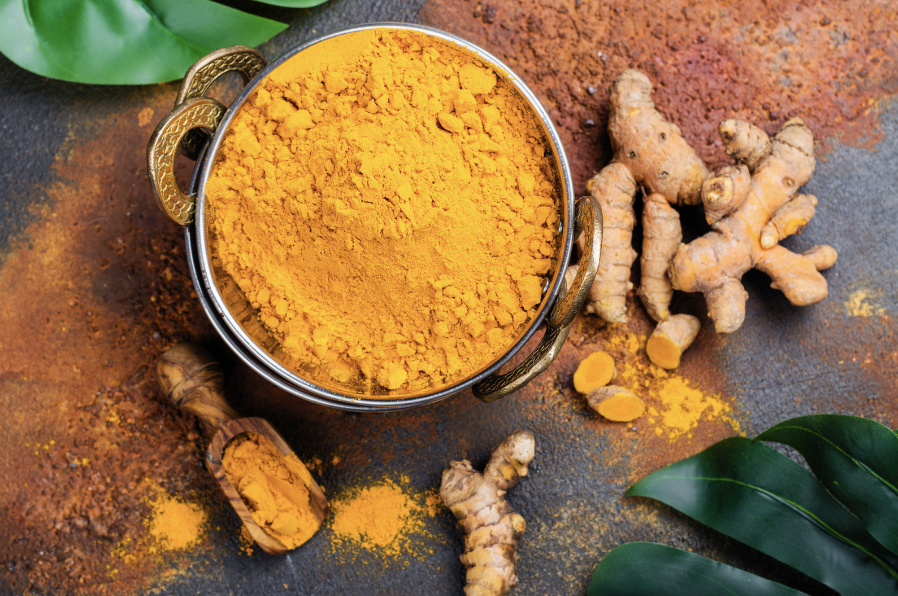Unlocking the Golden Spice – 3 Turmeric-Inspired Recipes For Better Health
Turmeric, the vibrant yellow-orange spice commonly used in South Asian cooking, has gained international recognition for its impressive health benefits. A member of the ginger family, turmeric is scientifically known as Curcuma longa, and its main active compound, curcumin, is responsible for its notable therapeutic effects. Known for its anti-inflammatory, antioxidant, and potential cancer-fighting properties, turmeric has a long history of use in Ayurvedic and traditional medicine. Here’s a closer look at the many ways turmeric may support health, as well as some easy ways to incorporate it into your diet.
Key Health Benefits of Turmeric
- Anti-Inflammatory Properties
Chronic inflammation is linked to numerous health conditions, including arthritis, heart disease, and metabolic syndrome. Curcumin, the active compound in turmeric, has powerful anti-inflammatory effects, potentially reducing inflammation at a molecular level. Research shows that curcumin can inhibit certain molecules involved in inflammation, making turmeric an attractive, natural anti-inflammatory option (Jurenka, 2009).Inspired Tur - Antioxidant Powerhouse
Curcumin also acts as a potent antioxidant, helping neutralise free radicals that can damage cells and lead to chronic disease. Curcumin has been shown to not only neutralise free radicals directly but also stimulate the body’s antioxidant enzymes. This double mechanism of action makes it a robust agent for protecting cells against oxidative stress. - Potential Cancer-Fighting Effects
While research is still ongoing, studies suggest that turmeric may have anti-cancer properties, particularly in its potential to prevent metastasis (the spread of cancer cells) and inhibit angiogenesis (the formation of new blood vessels to feed tumours). This makes curcumin an interesting focus in cancer prevention research, as reducing the spread of cancer and cutting off nutrient supply to tumours are key components in managing cancer growth. - Improving Brain Health
Emerging research indicates curcumin may have neuroprotective benefits, potentially lowering the risk of neurodegenerative diseases like Alzheimer’s by crossing the blood-brain barrier and reducing inflammation and oxidative stress in the brain. Curcumin may also boost levels of a brain-derived neurotrophic factor (BDNF), which supports brain function and cognitive health. - Supporting Digestive Health
Turmeric’s anti-inflammatory and antioxidant properties may aid digestive health, especially for people with inflammatory conditions like irritable bowel syndrome (IBS) and ulcerative colitis (Gupta, Patchva, & Aggarwal, 2013). It has also been traditionally used to support bile production, aiding digestion, and improving nutrient absorption.
Please Note: Turmeric may not be suitable for everyone. If you’re pregnant, nursing, have gallbladder or kidney issues, bleeding disorders, diabetes, or low iron levels, consider limiting your intake. It’s essential to consult your doctor if you have these conditions or are on any medications to ensure turmeric is safe for you.
Easy Ways to Add Turmeric to Your Diet
Incorporating turmeric into your diet is simpler than you might think! Here are some tasty ways to enjoy this golden spice:
1. Golden Milk (Turmeric Latte)
Golden milk is a comforting, nutrient-dense drink made with milk (or a milk alternative), turmeric, and spices like cinnamon and ginger.
Recipe:
- 1 cup of milk (or almond, coconut, or oat milk)
- 1/2 tsp ground turmeric
- 1/4 tsp ground cinnamon
- A pinch of black pepper (to enhance curcumin absorption)
- 1 tsp honey or maple syrup (optional)
- Heat all ingredients in a small saucepan, stirring continuously, until warm. Pour into a mug and enjoy!
2. Turmeric Smoothie
Add a touch of turmeric to your morning smoothie for a subtle, earthy flavour and a nutritional boost.
Recipe:
- 1 banana
- 1/2 cup mango chunks (frozen or fresh)
- 1/2 tsp ground turmeric
- 1/2 tsp ginger
- 1 cup coconut water or almond milk
- Blend all ingredients until smooth and serve.
3. Turmeric-Roasted Vegetables
Spice up your veggie game with turmeric-roasted vegetables, which are as delicious as they are nutritious.
Recipe:
- 2 cups of your favourite vegetables (carrots, sweet potatoes, cauliflower)
- 1/2 tsp turmeric
- 1/2 tsp cumin
- 1 tbsp olive oil
- Salt and pepper to taste
- Toss all ingredients in a bowl, spread on a baking sheet, and roast at 400°F (200°C) for 25-30 minutes or until golden brown.
Cooking Tips for Maximising Curcumin Absorption
Curcumin, while potent, isn’t easily absorbed by the body. To maximise its benefits, try pairing it with black pepper, as it contains piperine, a compound that significantly enhances curcumin absorption. Adding turmeric to dishes that include fats (like coconut milk or olive oil) can also increase its bioavailability, ensuring you reap the full health benefits of this golden spice.
For additional support, explore Zeno’s new Health Store partner, Healthspan. Healthspan’s turmeric supplements are crafted to combine ancient Ayurvedic wisdom with the latest scientific advances, ensuring you receive the maximum therapeutic potential of this golden spice. With innovative formulations like Opti-Turmeric® — a liquid curcumin technology that’s up to 185 times better absorbed than standard turmeric powders — and BioPerine® black pepper extract, which enhances curcumin bioavailability, Healthspan brings you high-quality, effective turmeric options for optimal wellness.
Final Thoughts
Turmeric is a versatile and flavourful spice that holds numerous health benefits, from anti-inflammatory effects to potential cancer-fighting properties. Whether you’re sipping on golden milk, blending it into smoothies, or using it in your cooking, adding turmeric to your diet can be a simple, delicious way to enhance your health. These qualities, along with curcumin’s safe pharmacological profile and low cost, make it an appealing option for further research and exploration (Aggarwal & Harikumar, 2009).
Back To Posts

